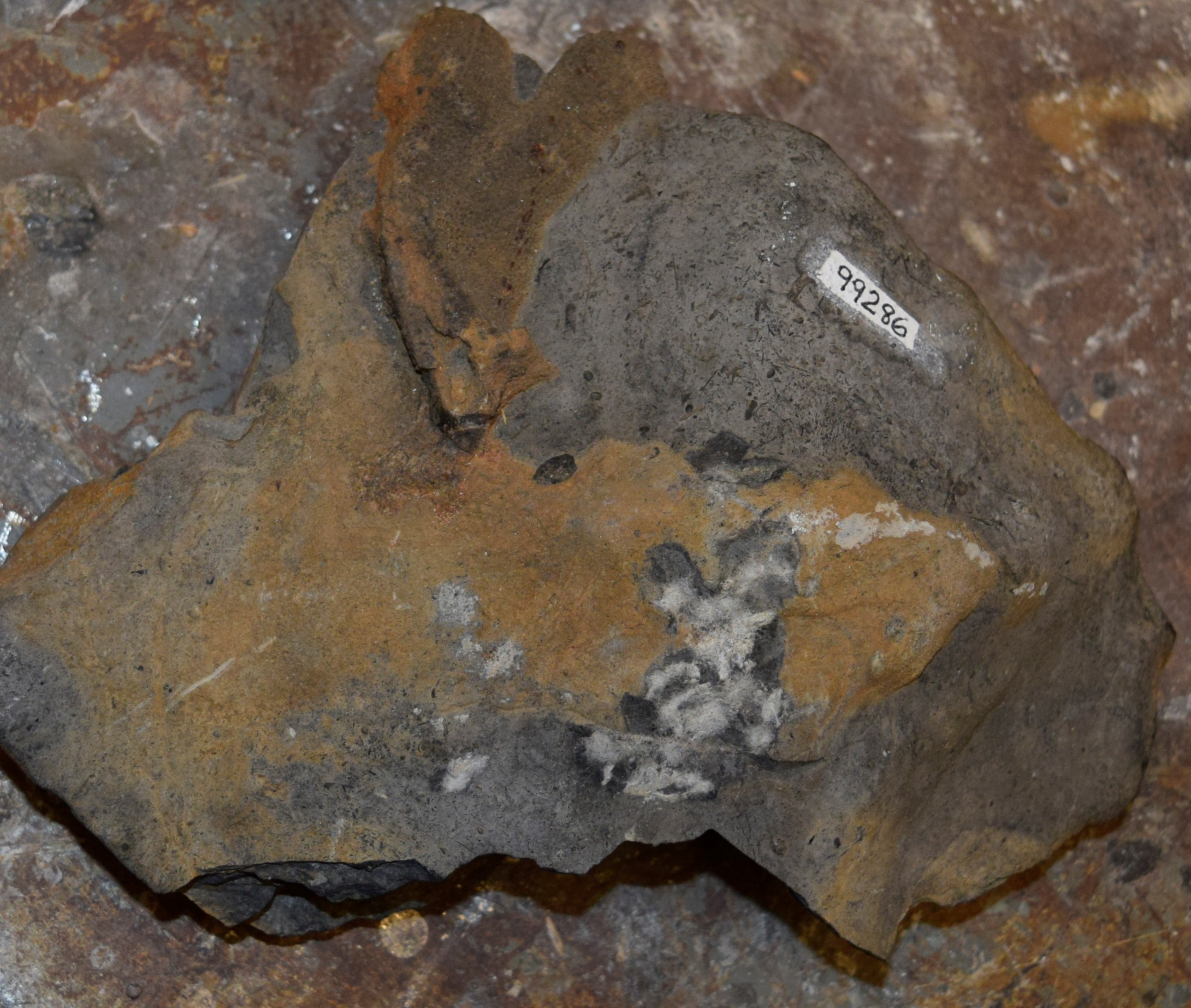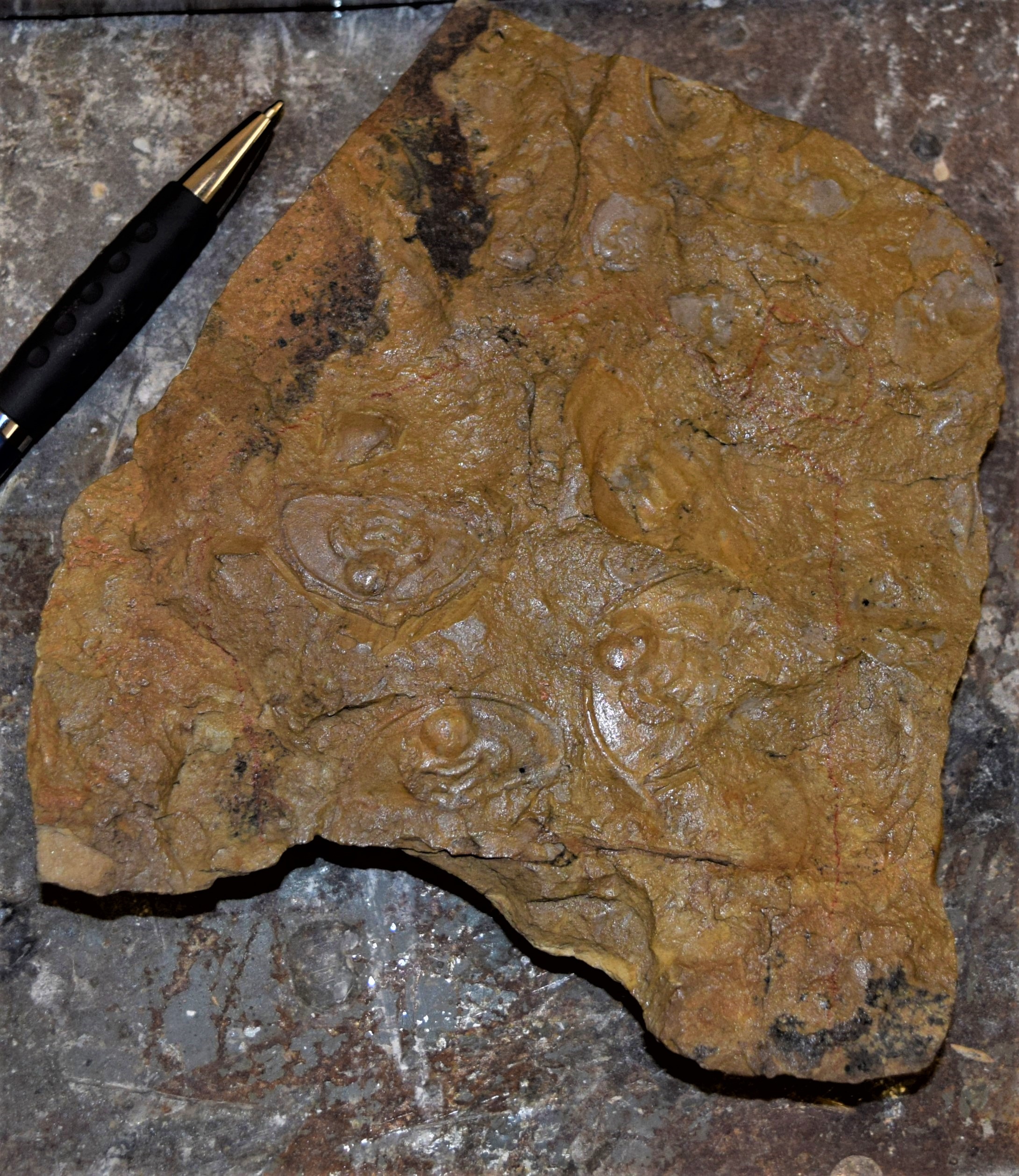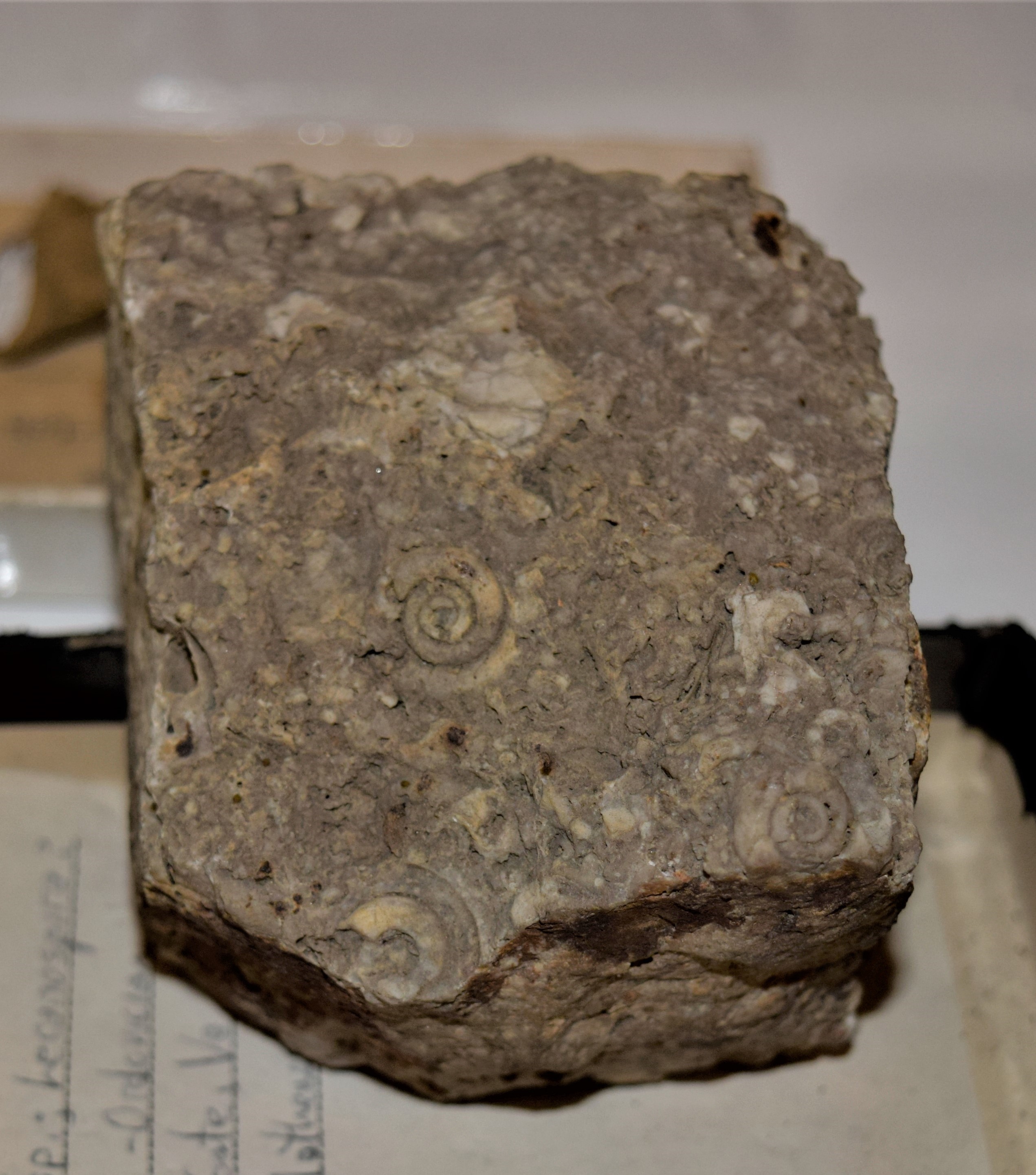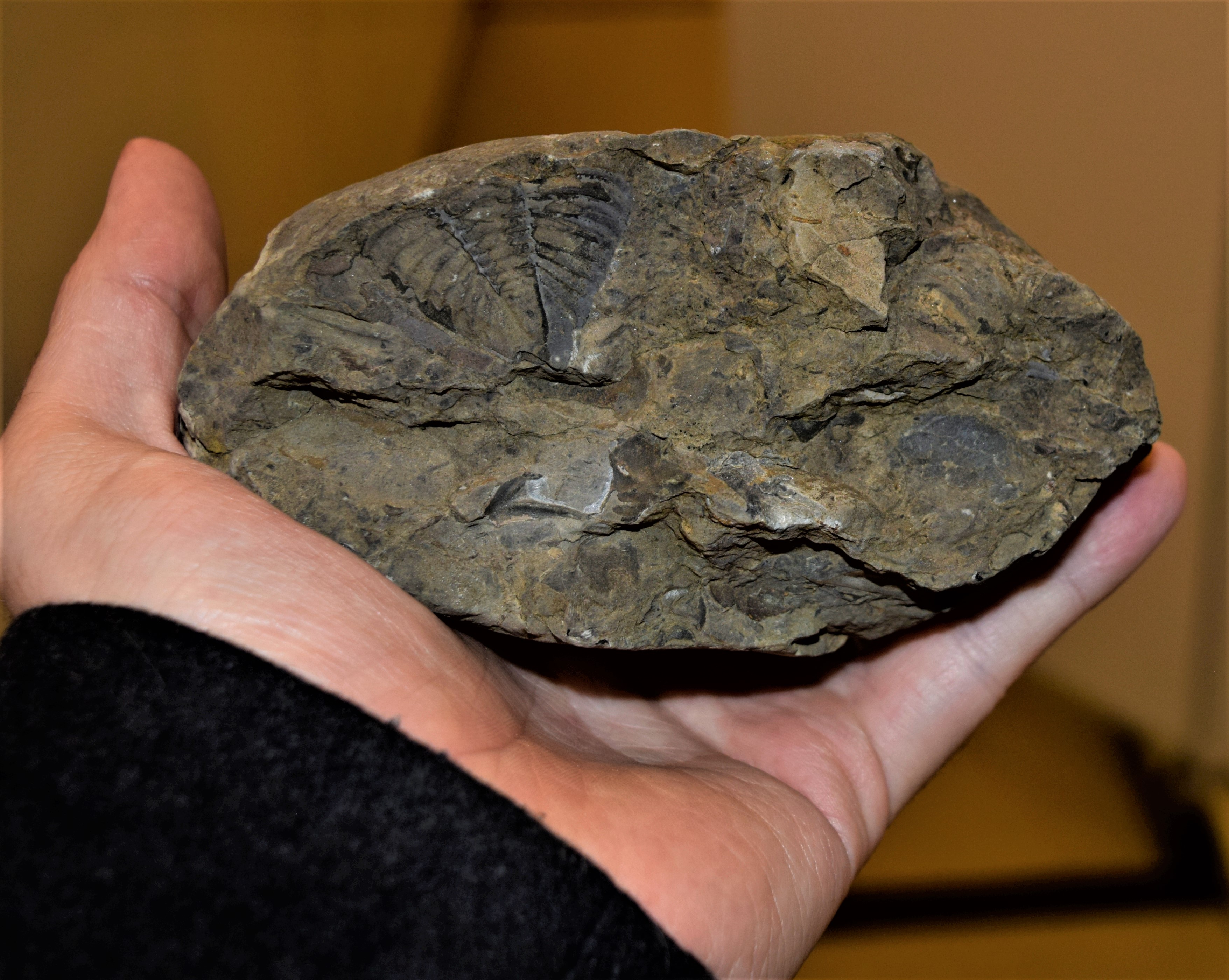The museum contains several thousand specimens of marine invertebrates from the western part of Virginia and the Appalachian Mountains, most collected by Virginia Tech paleontologists dating to the 1970s.
The specimens range in age from the Late Cambrian to the Carboniferous periods. Particular strengths include brachiopods, trilobites, and conodonts.
 An archaeocyathid sponge embedded in a matrix. Archaeocyathids were major reef-building organisms during the Cambrian Period. This specimen was collected by Virginia Tech scientists from the Shady Dolomite in the late 1970's.
An archaeocyathid sponge embedded in a matrix. Archaeocyathids were major reef-building organisms during the Cambrian Period. This specimen was collected by Virginia Tech scientists from the Shady Dolomite in the late 1970's.
The cephalons or head regions of the Cambrian trilobite Olenellus. Trilobites were important bottom-feeding animals from the Cambrian all the way to the Permian Periods. These specimens were collected by Virginia Tech scientists from the Rome Formation near Salem, VA.
Molds of the shells of Orospira, an extinct type of snail. These specimens were collected by Virginia Tech scientists from the Ordovician Luster's Gate locality near Blacksburg, VA.
Trilobite pygidia (hindquarters) found in garden stones by a family in western Martinsville, VA. The original collection site is unknown. Proof that fossils can be found anywhere!

 Hours & Admissions
Hours & Admissions Directions
Directions
